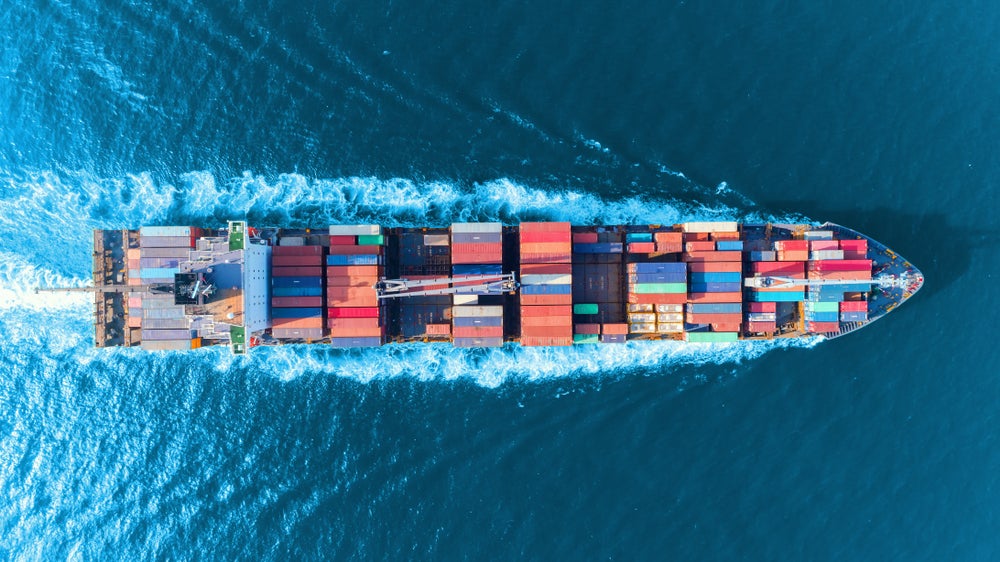Recent reports suggest that European fashion retailers are placing orders intended for this year’s festive season even earlier than usual, due to rising shipping costs and route disruption.
The FT reports the average cost of shipping a 40ft container between the Far East and northern Europe at short notice reached $4,343 in May 2024 – three times the rate paid in the same period in 2023.
What is causing the issue?
Ongoing tensions in the Middle East have caused disruption in the Red Sea. Since December 2023, several shipping companies have chosen to reroute ships around the Cape of Good Hope to avoid the Suez Canal.
Since then, the issue has become slightly more complicated. In recent weeks, many companies have chosen to “frontload” their imports.
Freight benchmarking company Xeneta’s chief analyst Peter Sand explained: “Ocean freight carriers have tried to remedy the diversions in the Red Sea by increasing transshipments in the Western Mediterranean as well as in Asia, but this has led to severe port congestion in several hubs.”
Sand added that using the Cape of Good Hope and US East Coast has only further contributed to rates increasing on routes outside of the Suez Canal.
“Everywhere you look there are knock-on impacts and unintended consequences which only serves to fan the flames of uncertainty across the ocean freight container shipping industry.”
Clive Black, research analyst at ShoreCap, said the cost of fuel is adding to the problem.
He added: “Singapore is becoming a bit of a refuelling bottleneck as many ships dock to accommodate the longer journeys around Africa; those Singaporean refuelling challenges are further extending the delivery times to Europe by up to seven days and so compounding the capacity and so pricing matters.”
Why is this pushing prices so high?
Xeneta’s Sand said the continued disruption and high demand was causing freight carriers to prioritise those paying the highest rates. “That means cargo belonging to shippers paying lower rates on long-term contracts is at risk of being left at the port. It happened during the Covid-19 pandemic and it is happening again now.”
“We are also seeing freight forwarders being hit with new surcharges and being pushed onto premium services to have space guaranteed onboard ships. In such cases they have no other option than to pass these costs on directly to their shipper customers.”
Sand cautioned that the situation may get worse for shippers before it improves.
What does this mean for the fashion industry?
In the UK, the BBC has reported that retailers are placing orders for the busy festive period earlier than usual.
Chloe Collins, head of apparel at data analysis company GlobalData told Just Style that early shipping could cause an issue for many fashion brands, especially in the current climate.
Collins elaborated: “Having to place orders for the Christmas period early will be challenging for UK retailers as consumer demand is currently fragile with a lot of uncertainty ahead, especially with the general election.
“Retailers could order too cautiously based on the weak sentiment at the moment, and then if momentum improves by the end of the year, they could face availability issues and miss out on crucial sales.
“And in contrast, if they are too optimistic and consumers continue to rein in spend until the end of the year, they will suffer from high stock levels and be forced to implement more markdowns, hitting the bottom line.”
Dr Sheng Lu, professor at the Department of Fashion and Apparel Studies at the University of Delaware, told Just Style: “Due to the seasonal nature of fashion apparel products, fashion companies must balance accurately forecasting consumer demand for the holiday season, ensuring timely product delivery and controlling overall forecasts.”
ShoreCap’s Black added that increased shipping costs were a particular issue for low-margin pure-play operators. He said: “The longer that these elevated prices persist, the greater the likelihood that costs will feed into the financial models of consumer goods’ manufacturers and retailers importing into the UK from Asia.”
How long will this trend continue?
“If no peace deal is forthcoming in Gaza, then the outlook for sustained tensions appears high,” ShoreCap’s Black explained. “There are reasonable grounds to assert that it is possible that elevated freight costs may be with the UK consumer goods supply chain for longer.”
As the crisis continues, Dr Lu told Just Style that fashion brands will need to think of longer-term solutions to the shipping issue.
He concluded: "As the Red Sea crisis and other geopolitical tensions show little hope of being resolved anytime soon, fashion companies may consider, beyond placing Christmas orders early, further diversifying their sourcing base and building a more resilient supply chain to mitigate the long-term impact."
















